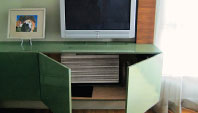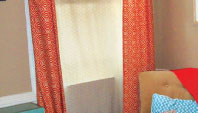~SeVen ThInGs YoU ShOuLd KnOw AbOuT aIrCoNd~
With spring here, summer is not that far off. It is time to start thinking about air conditioning. Here are seven things you should know about air conditioning.
1- Air conditioners are made up of two motors, which utilize electrical power. One of them is the compressor, which is the responsible for cooling the air with the refrigerant. The second motor is responsible for moving the air by driving the fan.
2- Your air conditioning costs goes up by about 3% to 4% for every degree that the thermostat is set lower than 78 degrees.
3- Make it a habit to regularly compare the room temperature with the temperature of the air being emitted by the air conditioner. The temperature of the air being emitted by the AC should be approximately 20F lower than the room temperature.
4- An air conditioner effectively dries out the air by converting the water vapor into liquid water. This decreases the humidity and increases the comfort level in the home. In a window unit air conditioner, this water drains out from the rear and in central air conditioning, the water flows to a basement floor drain. Window units have a drip pan at the base and in central air conditioning the drip pan is located beneath the cooling coil, which is inside the ductwork. This drip pan catches the water that flows out and directs it towards the appropriate drain location. Check this water flow. If you can see it going where it is supposed to go, then that’s great. It means your air conditioner is working just the way it is supposed to.
5- You need to make sure that your window units are tilted in such a way that the end that is indoors is higher than the outdoor end so that the water flows outside and not back inside the house ore else you’ll have one enormous mess inside the house. You should also make sure that the water does not drain down the furnace lest the furnace get rusted.
6- Schedule a pre-season maintenance that involves cleaning the drain and the drip pan. Failure to do so could prevent the water from draining. This stagnant water could form ice on the cold coil. As this ice builds up it prevents the outside air from coming in and flowing through the cold coil and thus prevent your air conditioner from functioning efficiently. It could even stop your air conditioner from functioning altogether. As soon as you notice that the air conditioner is not working as efficiently as it should and the house is not cooling down as much as before, you should take immediate action to rectify the situation. This is very easily done- The first thing you should do is turn off the air conditioner. Allow the ice to melt and then fix the drain problem. The AC can now be switched back on.
7- If the air seems to be flowing as it should, but the room does not appear to be getting any cooler, the problem is something other than ice. It could be the level of the refrigerant is low. An air conditioner will keep on running despite low refrigerant levels, but the problem is it does not cool the room down whatsoever. This is a complete waste of electricity.














